A Pilgrimage to Adam Lindsay Gordon’s Cottage
- 11th February 2023
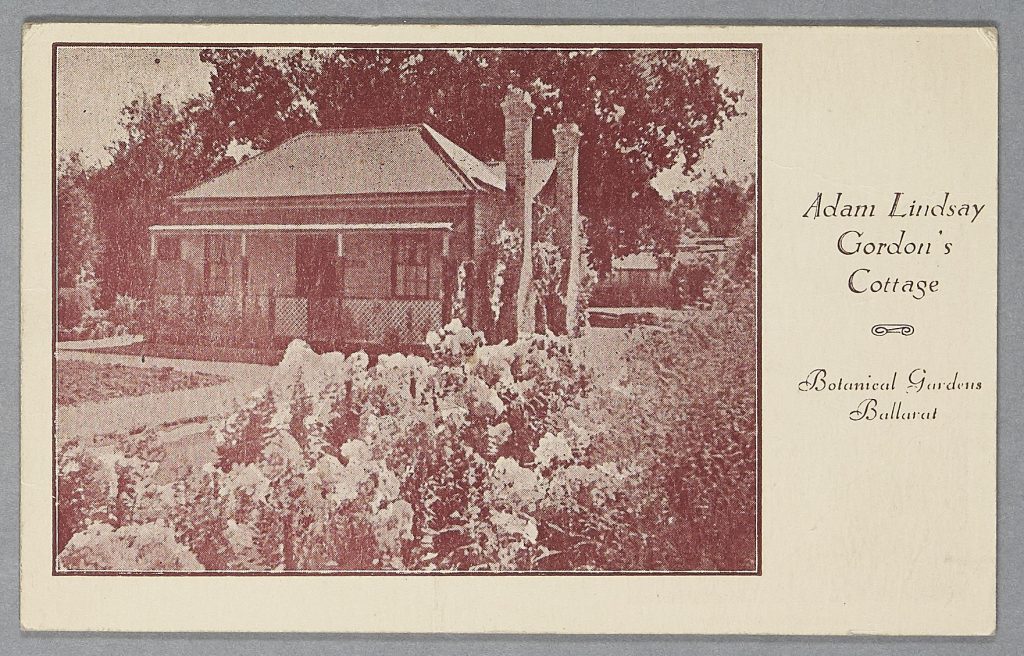
Souvenir Postcard showing Adam Lindsay Gordon’s Cottage Botanical Gardens, Ballarat, Victoria
A set of letters, programmes and postcards amongst items being catalogued in our Library Pamphlets collection (which came from Worcestershire History Centre before the service moved to The Hive in 2012) reveals that important local photographer A.J. Woodley (a Fellow of the Royal Photographic Society) had a particular interest in the celebrated 19th century poet Adam Lindsay Gordon who has some links with Worcester. Adam Lindsay Gordon is regarded by some as the founding father of “Australian poetry”, a horseman and steeplechaser. Correspondence from the Adam Lindsay Gordon Cottage Fund to Woodley confirms this and it seems he undertook a Pilgrimage on a visit to Australia in the 1950’s and sites in England. (Please note reference is made to suicide in this article, which you may find uncomfortable. For support and information, you can visit Suicide prevention | Worcestershire County Council)
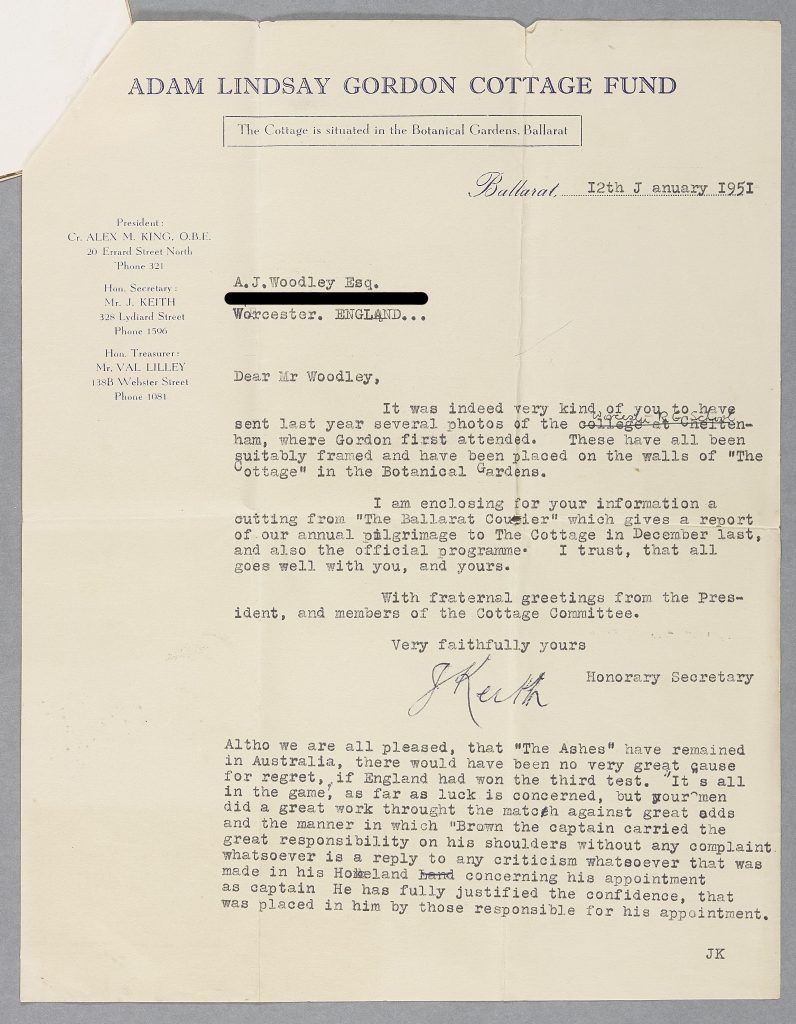
Letter from The Adam Lindsay Gordon Cottage Fund to A.J. Woodley, dated 12th January 1951
Born in Charlton Kings, Cheltenham, Gordon attended Cheltenham College and later The Royal Grammar School Worcester in 1852 though he doesn’t appear to be listed in the Admission Registers for this date. This is probably as Gordon was taught privately and in the school magazine of that year, Headmaster Canon Temple wrote that ‘Lindsay Gordon was really a most extraordinary genius’. He is proudly celebrated by the school with a plaque and the discovery of the Memorial bust in Poets’ Corner, Westminster Abbey (Gordon is the only Australian poet commemorated there). Woodley appears to have sent photos to the Cottage Fund of the Royal Grammar School, which were hung at Gordon’s Cottage in the Ballarat Gardens.
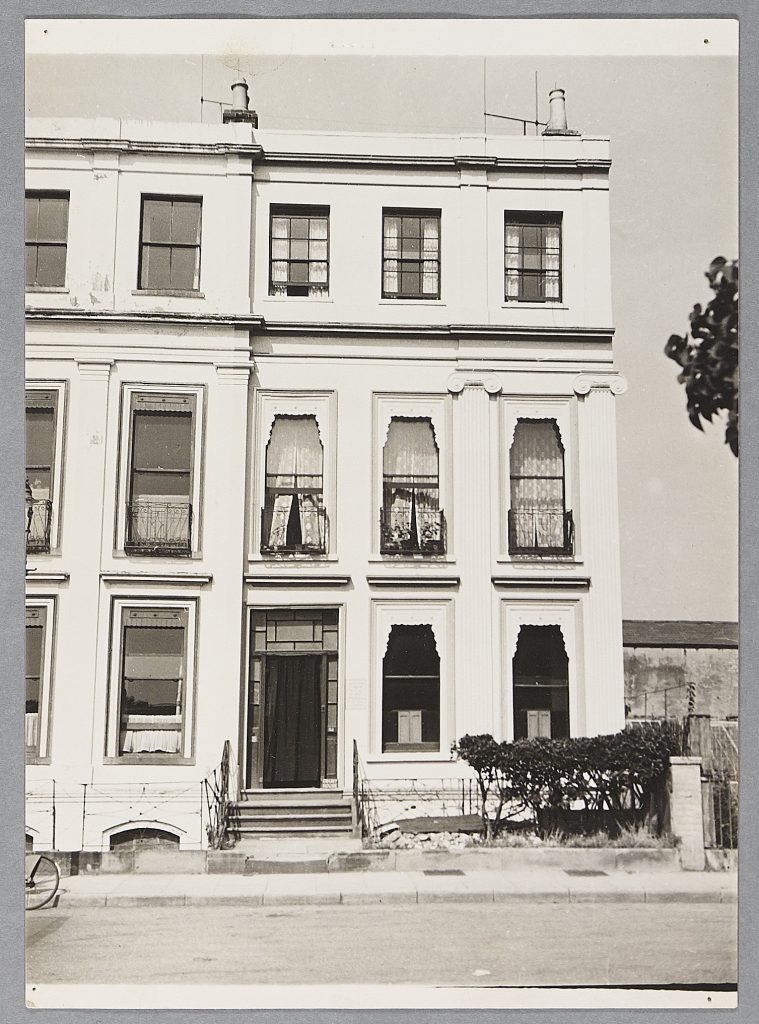
Postcard of No. 26, The Old Court House, Priory Street © Unknown
Gordon was brought up in an affluent family environment, son of Captain Adam Durnford and Harriet Gordon. His mother’s family had owned slaves in the British West Indies until the abolition of slavery in the 1830’s and had received significant financial compensation for the loss of their, what was unacceptably referred to at the time as, ‘property’. During his early life in Cheltenham the young Adam Gordon led a reckless lifestyle and contracted debts. His childhood home in Cheltenham, known as The Old Court House is a listed building which can be seen at No. 26 Priory Street.
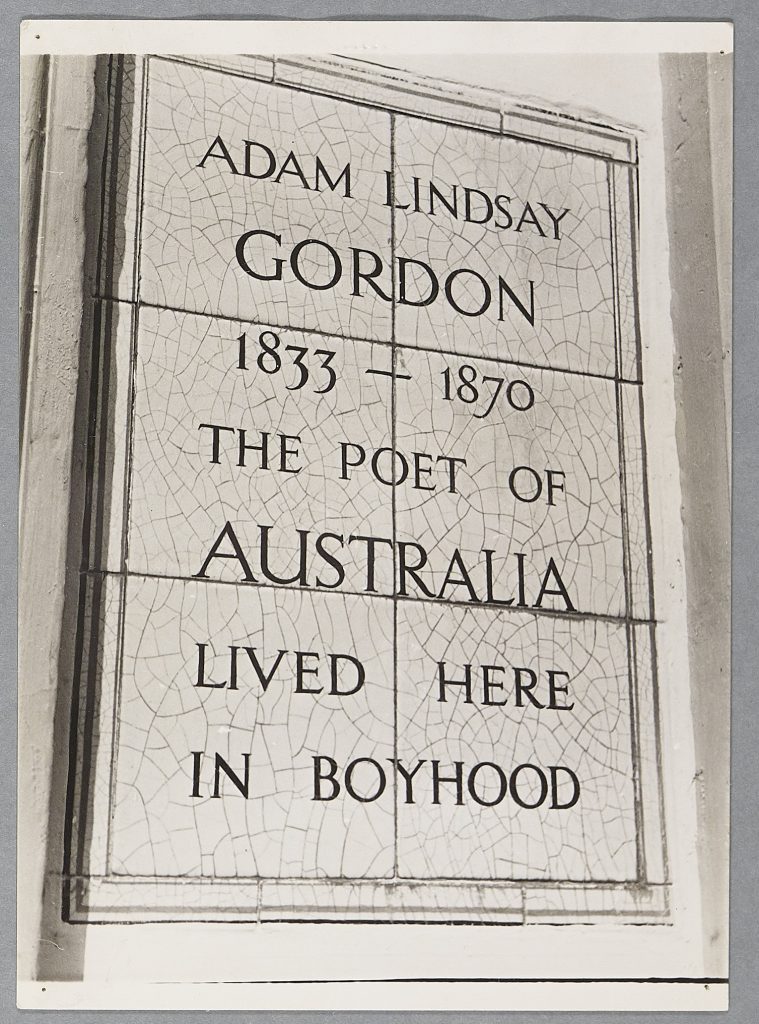
Postcard of the plaque outside No. 26, The Old Court House, Priory Street © Unknown
His father decided that Gordon should be sent to Australia and left on the barque Julia bound for Adelaide in 1853. This was at a time of ‘The Gold Rushes’ when Australia’s colonial identity was being shaped by emigration from Europe. Prior to leaving for Australia, Gordon had fallen in love with a young woman called Jane Bridges, whom he had loved dearly and had been willing to sacrifice his passage to be with her, but it was not to be and his poem “To my Sister”, written three days before he left England reflects his disappointment at his behaviour and turn of events:
‘My parents bid me cross the flood, My kindred frowned at me;
They say I have belied my blood, And stained my pedigree.
But I must turn from those who chide, And laugh at those who frown;
I cannot quench my stubborn pride, Nor keep my spirits down.’
‘I once had talents fit to win Success in life’s career,
And if I chose a part of sin, My choice has cost me dear.
But those who brand me with disgrace Will scarcely dare to say,
They spoke the taunt before my face, And went unscathed away.’
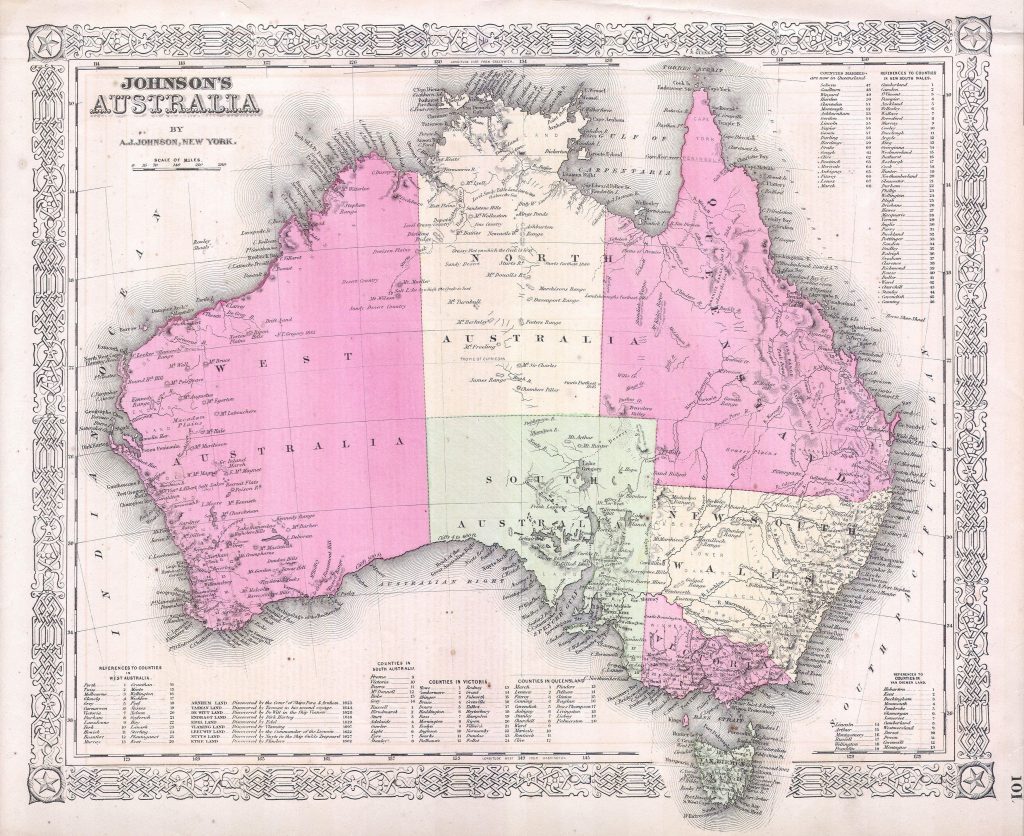
Map of Australia by Alvin Jewett Johnson c.1865 © Public Domain
He began his new life at Mount Gambier as a mounted Policeman with a letter of introduction to the governor. It later became apparent that his skills were not just confined to poetry. He resigned the police force in 1855 and took up horse-breaking and later made his name in horse-racing, often winning or being placed in local steeplechases. Whether horse breaker, stockrider or fearless steeplechaser, horses were central to his life. Gordon is famous also for making a leap over an old post and rail guard fence onto a narrow ledge overlooking the Blue Lake and jumped back again onto the roadway. This famous leap was later commemorated as shown by the Obelisk in the image below taken at Blue Lake, Mount Gambier in 1887.
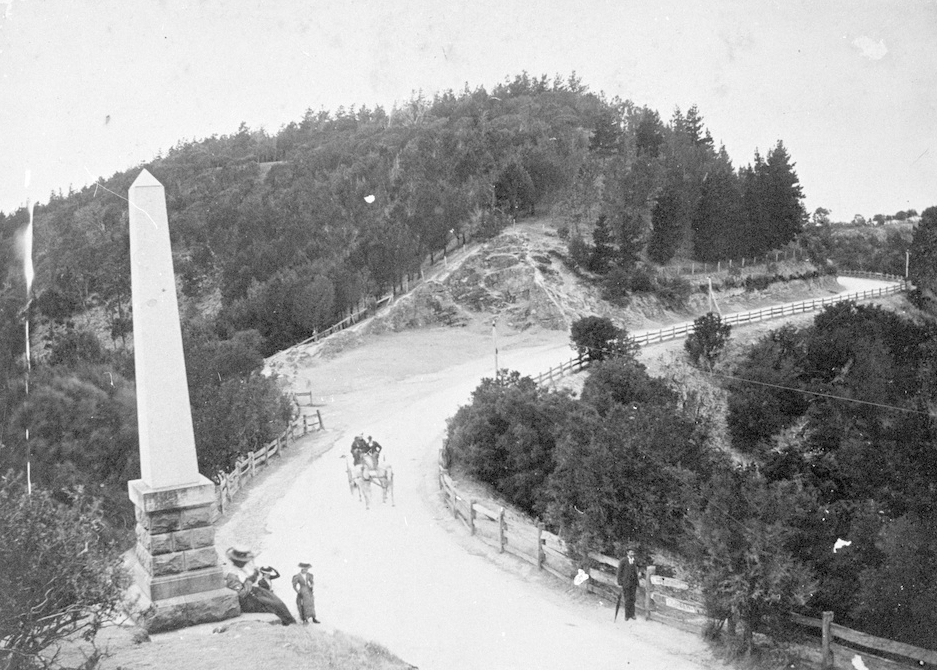
Monument at Blue Lake, Mount Gambier commemorating Gordon’s Leap. 1887 © Public Domain
His father died in 1857 and his mother a few years later. His mother had left him the sum of £6944–18–1 in 1861. A year later, he married 17-year-old Margaret Park and life appeared to be going much better. In March 1864, he bought Dingley Dell, a cottage, near Port MacDonnell, and, in this same year, inspired by six engravings after Noel Paton illustrating “The Dowie Dens O’ Yarrow”, Gordon wrote a poem The Feud, of which 30 copies were printed at Mount Gambier. In 1865 he was asked to stand for parliament, being elected by three votes as representative for the District of Victoria. Politics, however, appears not to have agreed with him and he resigned in 1866, declaring horses and poetry were his only possible life. Gordon was inspired to write ‘From The Wreck’ telling of the ride made by Peter Black to raise the alarm when the S.S. Admella ran aground on the rocky coast 30 miles south west of Mount Gambier in 1859.
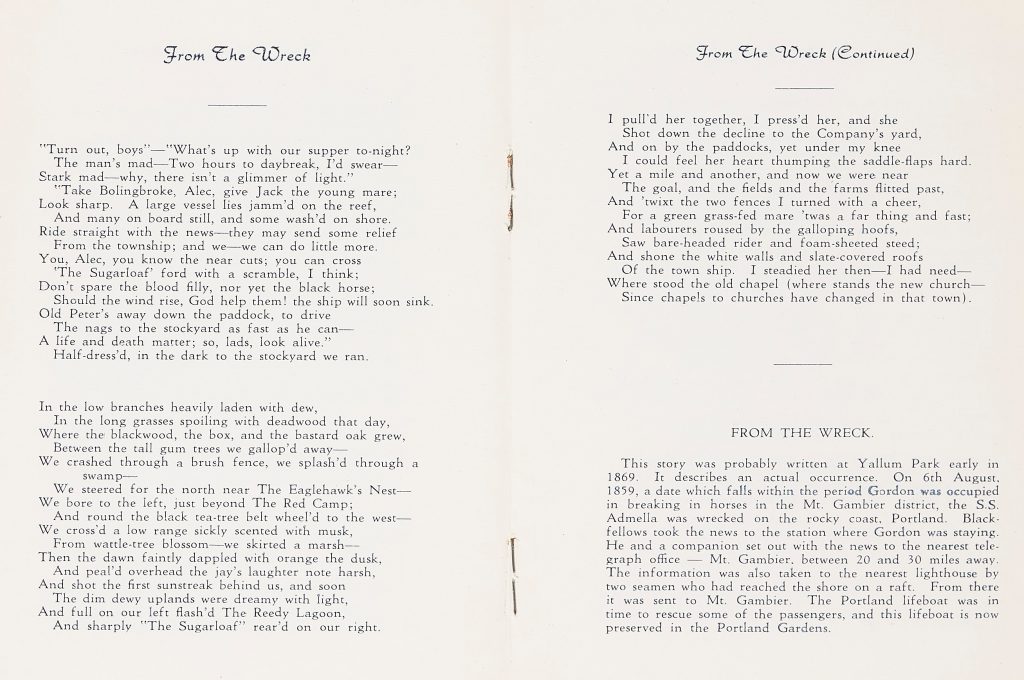
‘From The Wreck’ taken from Souvenir Brochure, Adam Lindsay Gordon’s Cottage, Botanical Gardens, Ballarat 1953
Gordon purchased 50 acres of land in the Donnelly River Valley, Manjimup in partnership with a Mr. Lambton Mount, one of the old Ballarat family to establish a large sheep station. It has been described that they became the ‘first’ settlers there, however Indigenous Pibelmen were dispossessed of their land by these and other European settlers. See Donnelly River Village | Noongar History for an external resource with links to further information. Gordon leased 20,000 hectares of the surrounding country known as Mt. Lewen Station for sheep farming. However, unbeknownst to him, the area was infested with blind grass – a weed poisonous to farm animals mustering only 1300 sheep, a quarter of their original flock.
Financially crippled, Gordon lost nearly all the capital in the venture. Prior to leaving Gordon requested Mr. Mount to destroy, without reading, a whole portmanteau (travelling bag) of poetry. Only a fragment of a single poem entitled ‘The Old Station’ is said to have survived. The first line of which is ‘All night I’ve heard the marsh-frog’s croak…’ It was found by a shepherd in the pocket of an old pair of trousers, given him by Mount after Gordon left. Gordon is remembered in the Manjimup area in road and forest plant names.
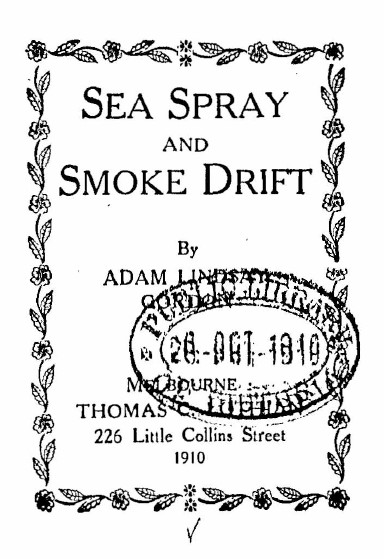
Sea Spray and Smoke Drift (Title Page) by Adam Lindsay Gordon, State Library of Victoria © Public Domain
In 1867 he published his first collection of poems called Sea Spray and Smoke Drift. It sold only a hundred copies and Gordon was still trying to earn a living through horses and other means. Some happy news came in May, when his wife gave birth to their daughter Annie. Gordon moved to Ballarat in Victoria, renting Craig’s livery stables at Ballarat in partnership with Harry Mount, but the venture was yet another failure. He had amassed significant debts in legal fees to try to secure his mother’s Esslemont Estate in Scotland which was declared fully entailed. Then, in March, 1868, Gordon had a terrible accident suffering a fractured skull when a horse called Necromancer baulked and trod on his face whilst schooling him as reported in the Ballarat Star. The worst news of all however was yet to come. His daughter Annie of only 11 months old died of an infection whilst he was still recovering from his injuries. His wife Maggie, in her grief, left Ballarat soon afterwards.
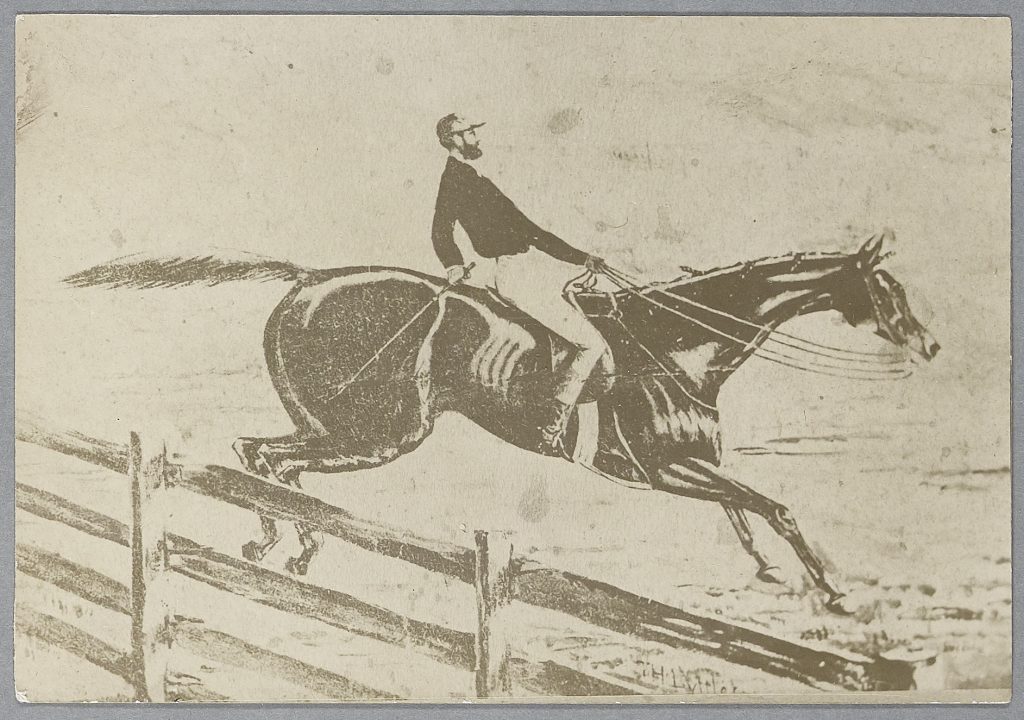
Postcard of illustration of Adam Lindsay Gordon on Viking © Unknown
In a mood of deep despondency caused by a succession of bad falls, the death of Annie, the loss of property and ensuing debt, on the 23rd June 1870, the day of publication of Gordon’s second poetry collection Bush Ballads and Galloping Rhymes Adam Lindsay Gordon walked down to Brighton Beach and shot himself. During the first half of the 20th century, Gordon’s poetry has received widespread critical acclaim around the world. Oscar Wilde and Sir Arthur Conan Doyle were amongst his admirers and another curious link to Worcestershire is that English composer Sir Edward Elgar set music to Gordon’s poem A Song of Autumn and The Swimmer forms the libretto for the fifth movement of his Sea Pictures.
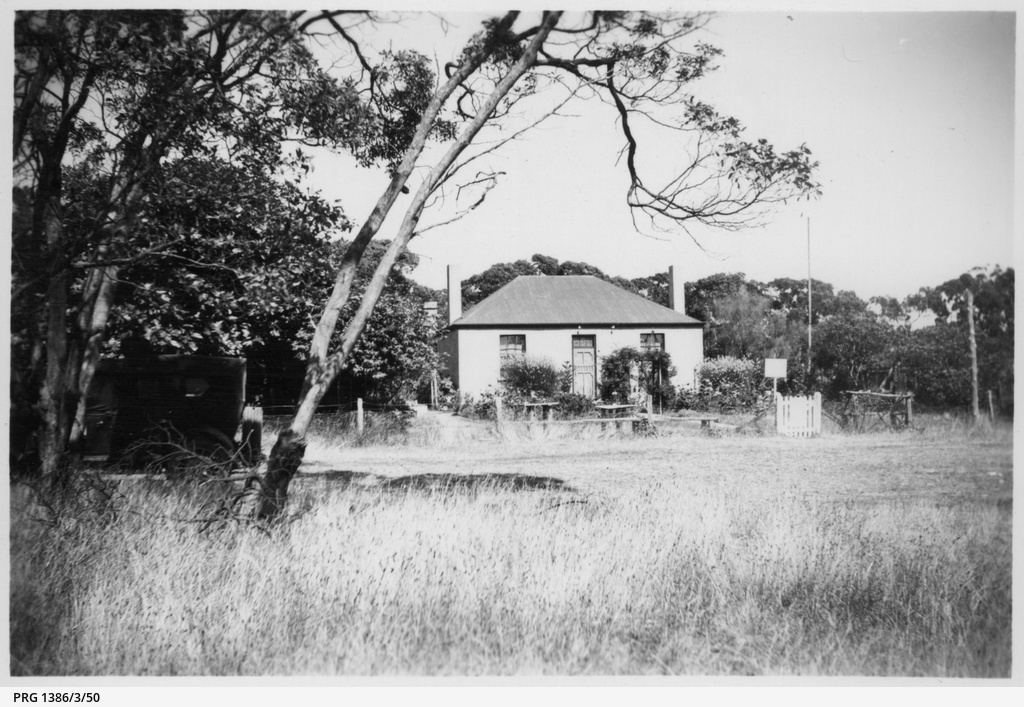
View of Dingley Dell, the former home of Adam Lindsay Gordon, circa 1950, State Library of South Australia, Ref: PRG-1386-3-50
Both of Gordon’s homes of Dingley Dell and the cottage attached to the stable at Craig’s Hotel in Ballarat (which is now the Adam Lindsay Gordon Craft Cottage) are museums which can be visited today. The cottage was moved to the Ballarat Botanical Gardens and opened in 1934, the same year that the bust of Gordon was unveiled in Poet’s Corner. The Cottage Fund organised The Annual Pilgrimage to Gordon’s cottage in Ballarat, for those, like Woodley, wishing to pay homage to Gordon’s life and his poetical works.
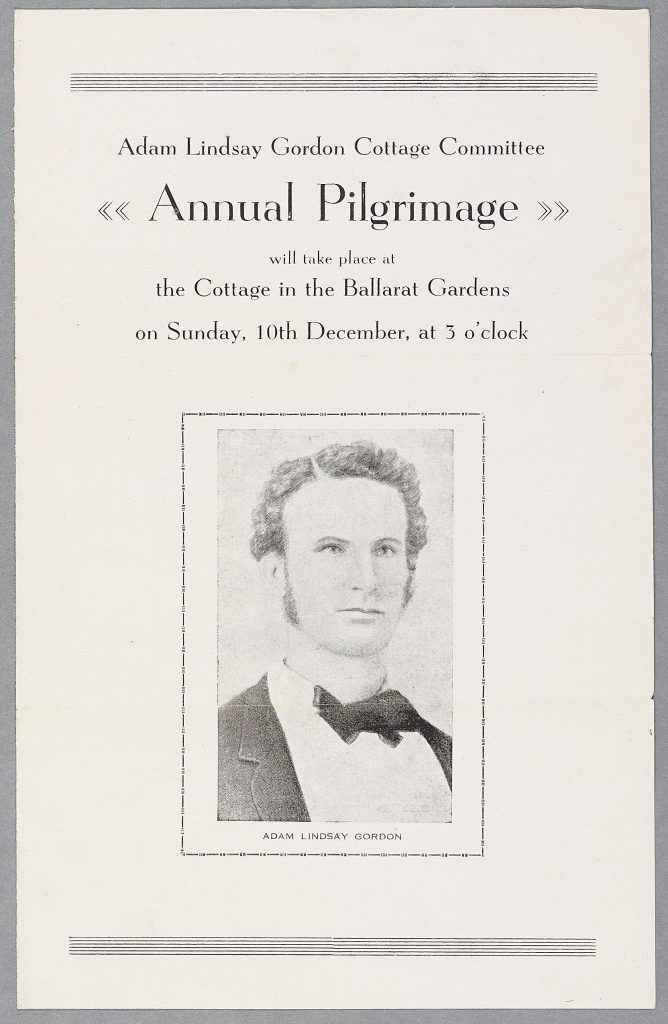
Pilgrimage Programme of the Adam Lindsay Gordon Cottage Committee attached to the letter of 12th January 1951
Sources and further reading:
Hutton, Geoffrey – Adam Lindsay Gordon: the man and the myth. 1909. Carlton South, Vic.: Melbourne University Press, 1996. Available at Ref: 821.8 GOR, Level 2 – Local Studies Collection.
The Adam Lindsay Gordon Commemorative Committee Inc. available at adamlindsaygordon.org
The Adam Lindsay Gordon Craft Cottage available at www.visitballarat.com.au/explore/adam-lindsay-cottage
Post a Comment